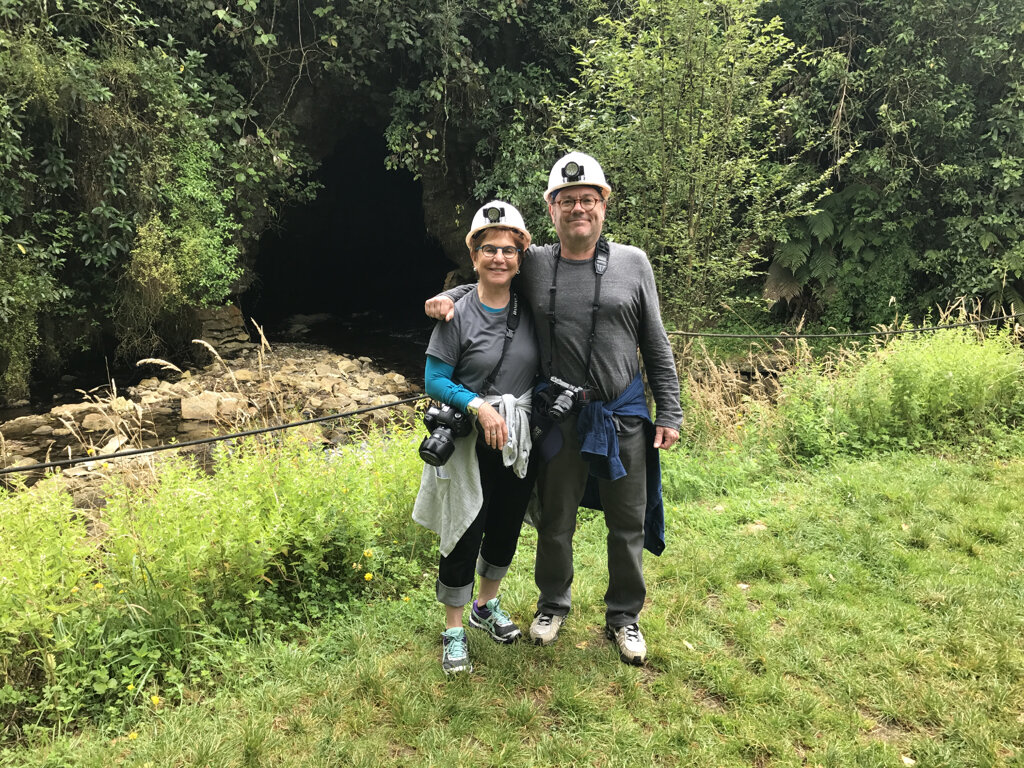Wai means water and tomo means hole in Maori. The caves we explored on Wednesday were formed thousands of years ago by water pouring through the limestone layers – the former seabed of this area - now its surface. We visited this town, Waitomo of only 40 residents which receives over a half million tourists each year- including us…. After putting on our helmets,
about a dozen of us (from many parts of the globe) followed our guide deep into a cold a damp cave. Why? To see the glow worms which populate the ceilings and walls of these dark wet caverns, to learn about bioluminescence and to learn that these creatures are not really worms after all, but maggots…
It was truly a magical, surreal experience and satisfying our curiosity and need to understand our geological history.
Deep inside one of them we came upon the skeletal remains of a Moa...
When the Polynesians settled New Zealand around CE 1280, the Moa population was about 58,000. Think of “big bird” and you get the idea of these creatures who sometimes reached about 12 feet in height with their neck outstretched, and weighed about 500 lbs.…
They were the dominant herbivores in New Zealand's forest, shrubland and subalpine ecosystems for thousands of years - until the arrival of the Māori who hunted them down. Their extinction occurred around 1300 primarily due to overhunting by Māori- similar to what happened in the states to the mastodon and wooly mammoth.




